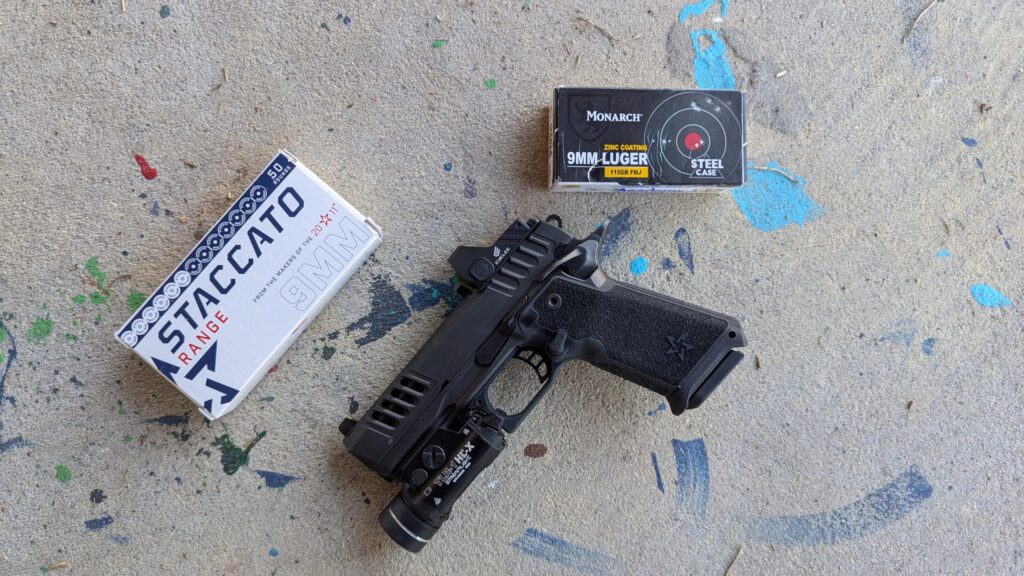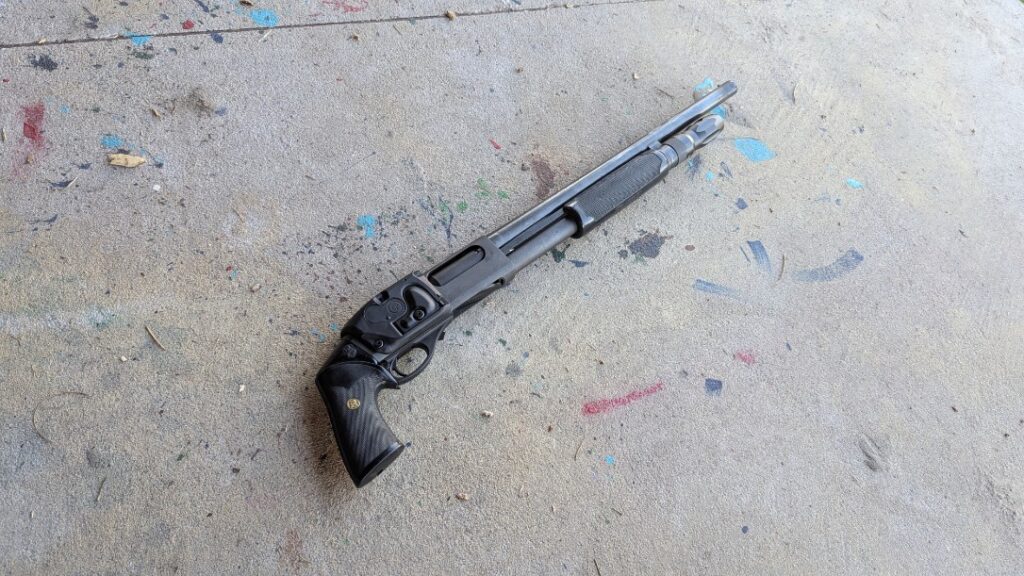Click here to read Part 1 of this article, which covers the hands-on portion of actually shooting shells through my shotgun. Recovered Hornady Versatite wads are shown above.
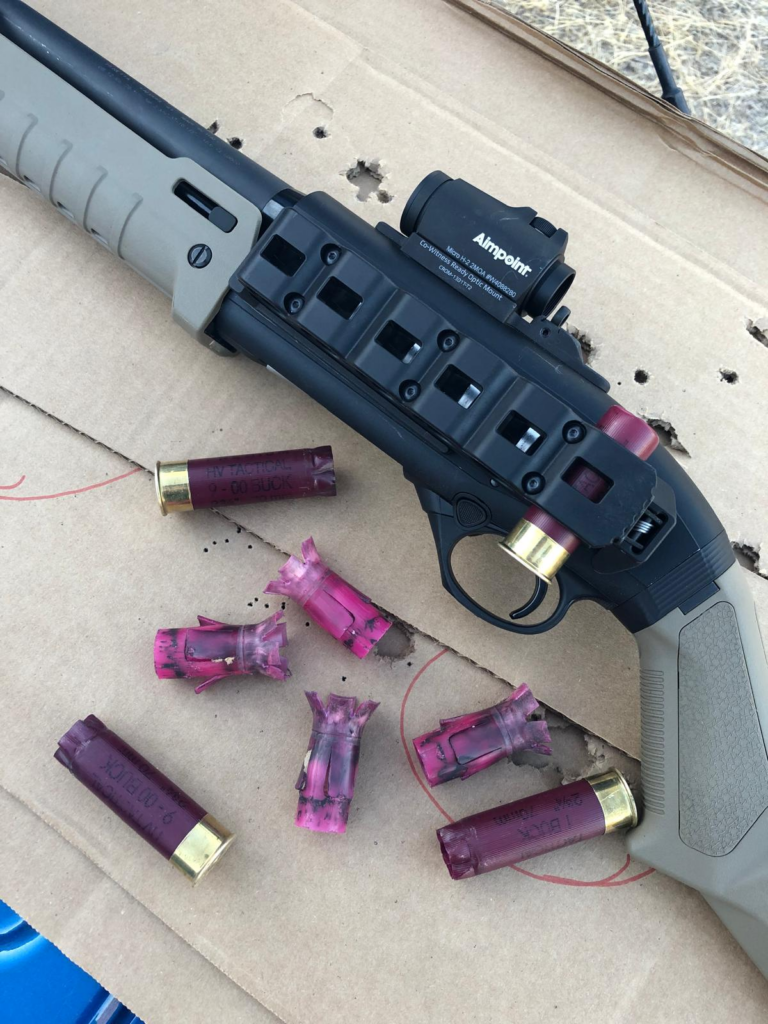
Pattern Analysis
Does the Hornady Versatite wad make a difference? It does. One simply needs to look at the patterns my Beretta printed at 5 and 10 yards. In this way, they’re very similar to patterns I had seen in the past with Flite Control, where all the pellets are still inside the wad or very close to it.
Advertisement — Continue Reading Below
Examining the recovered Versatite wads, they are quite similar in appearance to the Flite Control wads themselves. So, it wouldn’t be a stretch to assume they both work off similar principles.
In fact, something that Matt Haught of Symtac Consulting taught me is that both the Versatite and Flite Control wads share a “common ancestor” from the wad used in little known Choke Law Enforcement Buckshot load developed by a man named Chris Billings some 25 years ago.
Even at shorter distances of 5-10 yards, one can generally observe a larger pattern from standard buckshot loads that use unsophisticated horsehair, felt, or plastic wads.
Advertisement — Continue Reading Below
For reference, the wider 10-yard pattern from Target 1 in Part 1 of this series is still fairly “tight” in relation to those standard loads. The same is true of the patterns printed at 15, 20 and 25 yards so there’s no doubt the Versatite wad certainly affects the shot column positively.
Is There a Trade-Off?
With that being said, I think the ultra-low recoil found in this load comes at a trade-off, especially for further shots. There’s much discussion on Internet based shotgun groups and social media channels about how high velocity buckshot with nine pellets ought to be avoided because it promotes fliers. Could the opposite could also be true too?
Perhaps the propensity for fliers could also increase with payloads with lower muzzle velocities that run out of steam sooner. According to Hornady’s own website, these loads exit the muzzle of an 18-inch Remington 870 at 985 FPS (the 1100 FPS rating is based on a longer 30-inch test barrel).
Advertisement — Continue Reading Below
985 FPS is certainly on the milder side of shotshells, and the trade-off for less recoil in this instance will be slightly wider patterns beyond 20 yards. I’m also curious how the lack of grex or other variables in the Hornady TAP loads affects dispersion at further distances.
Anecdotal Comparison
My 25-yard patterns in Part 1 could be an indication of wider patterns with slower velocities. But again, to test that out, I’d need a more robust sampling involving more than one shotgun barrel. I found some old photos on my phone from four years ago that serve as weak anecdotal information that’s also in line with my observation “educated guess.”
These pictures show cardboard sheets that I shot with the same Beretta 1301 using both Federal reduced recoil 9-pellet Flite Control LE 132 00 (1145 FPS) and their High Velocity Flite Control LE 127 00 (1325 FPS). The latter also happens to be my cartridge of choice. But looking over these photos, it’s clear that the faster LE 127 00 has a marginally tighter pattern at 25 yards.
Advertisement — Continue Reading Below
Do keep in mind that both Flite Control loads use copper-plated shot and grex, which are other variables that could also play a role. Nonetheless, the faster LE 127 00 load seems to pattern slightly tighter, even with the “flyer.”
The pictures: I took only one shot at each target. I shot these nearly four years ago before I was better informed about shotguns and patterning them properly. In my defense, any flavor of Flite Control was very hard to come by during peak COVID. At least I managed to have both of these saved on my phone, so I wanted to share them. At the time, I was measuring spread by measuring the furthest two pellet impacts with a ruler along two axes.
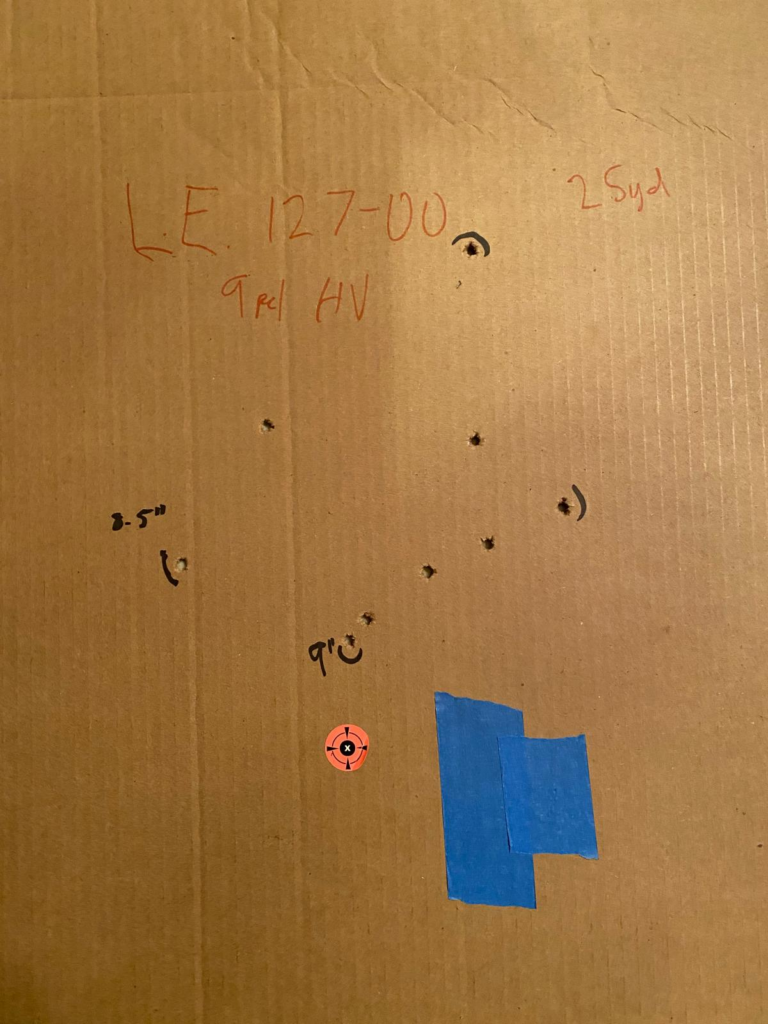
Advertisement — Continue Reading Below
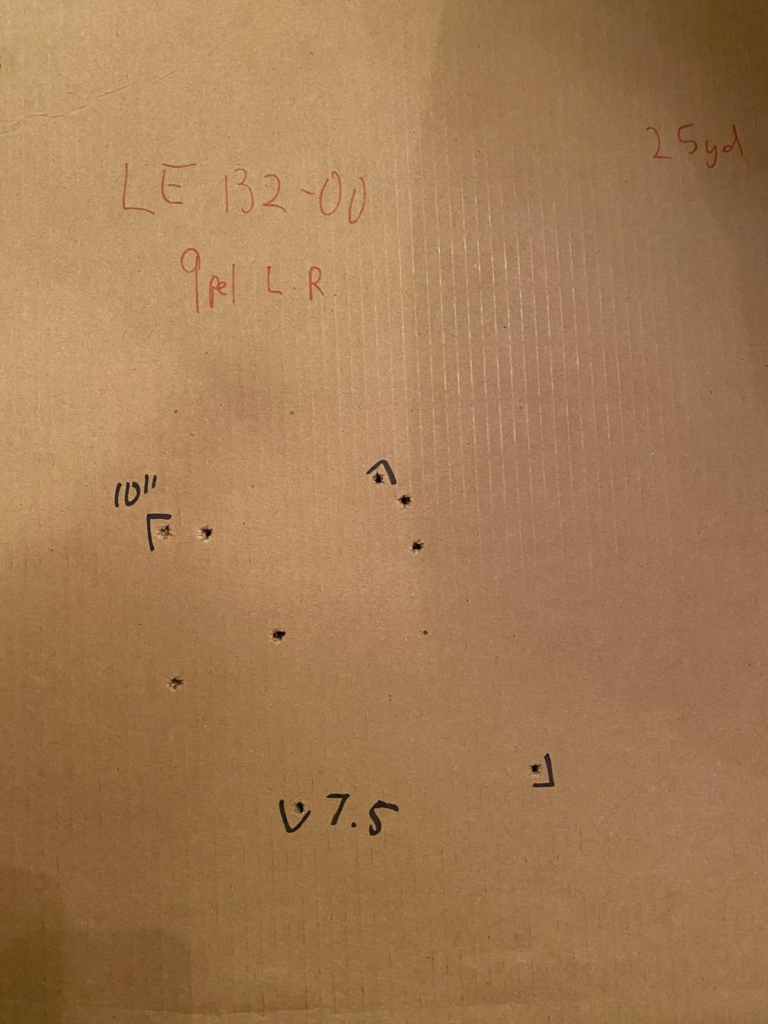
Additional Anecdotal Images: Old School Buckshot
While digging through my phone for the above Flite Control patterns, I found more images of poorly labeled buckshot patterns from early 2020 that I had patterned through my Beretta 1301 for fun as well. I had four shells, two with blue hulls and two with green hulls from Remington-Peters.
Both of these 12-gauge loads were loaded with 12 pellets of 00 buckshot, and both had very stout recoil and threw wide patterns at 15 yards, as shown below. Due to the way the pellets were stacked in the shell, they had a tendency to fly out and throw cool snowflake patterns at closer distances. They were visually stunning but not helpful as pellets ought to ideally remain centralized (see green pattern below on 20-inch wide cardboard).
Advertisement — Continue Reading Below
My intention in showing these is for additional reference and to illustrate how well the Versatite or Flite Control shuttlecock-shaped wads work in of themselves.
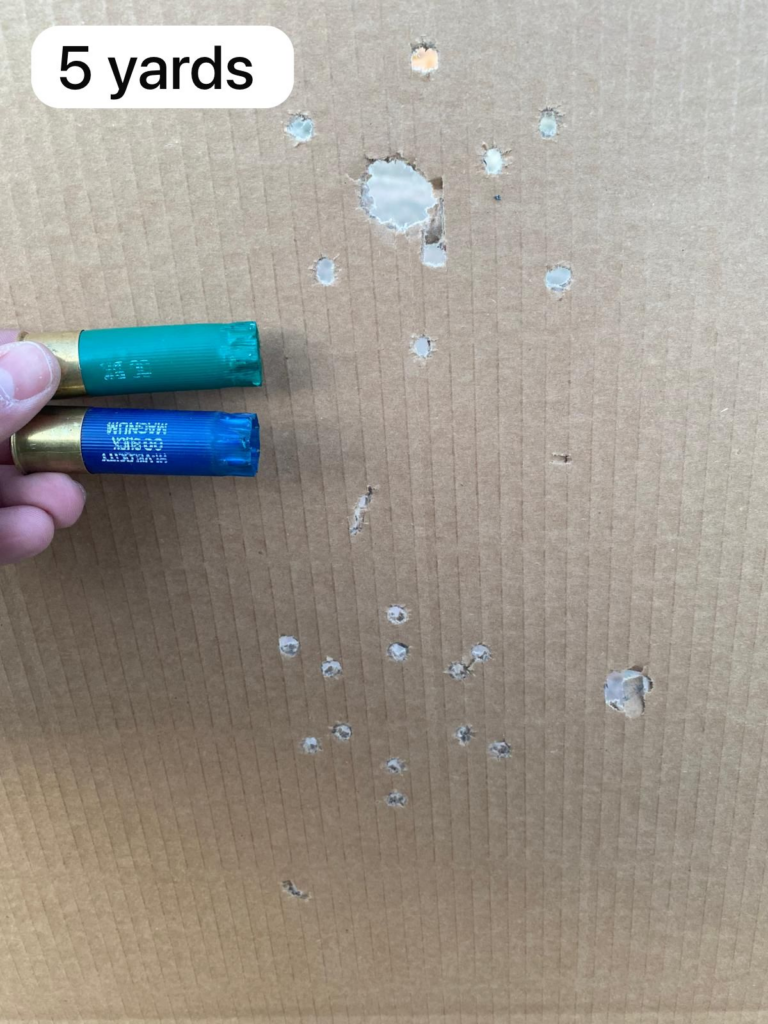
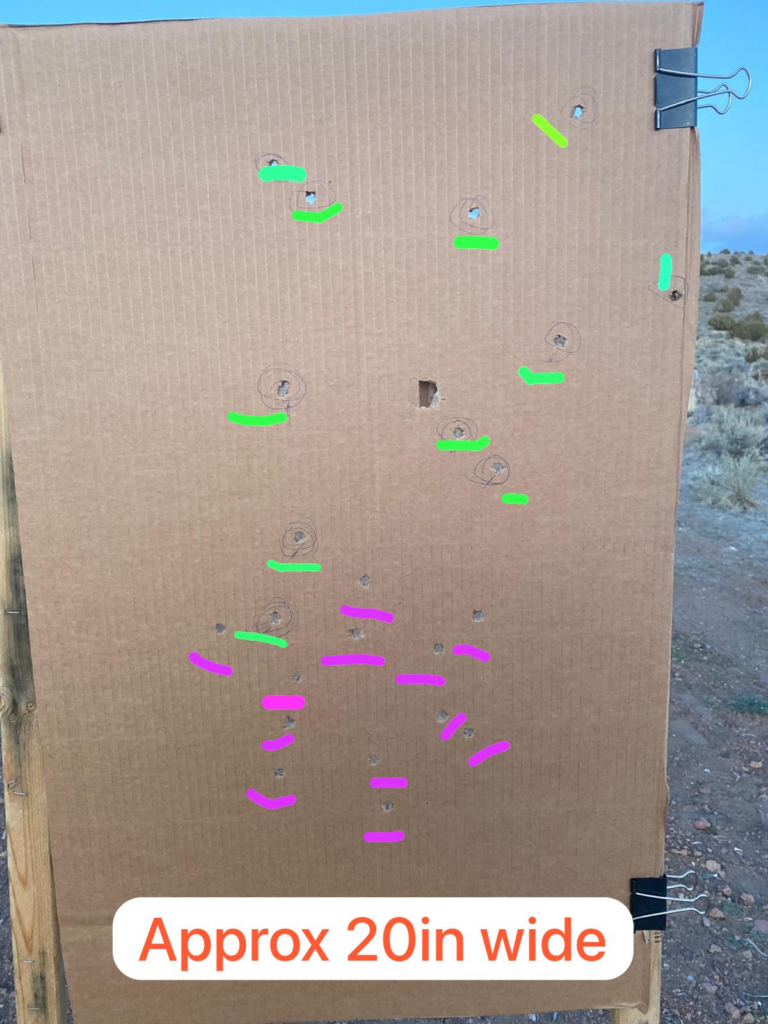
Advertisement — Continue Reading Below
The Takeaway
Trading Velocity For Recoil
The ultra-low-recoil nature of this load means that it cycled, but just barely, through my Beretta 1301 Tactical. Even though the Beretta Blink gas system is one of the most tolerant in any semi-auto shotgun, like any system it still has a threshold of the type of shells it can reliably cycle.
Beyond the patterning exhibited by the Hornady 12ga TAP low-recoil load, which I don’t find to be too disagreeable, this load is best left to pump-action shotguns only. To be clear, all shells were successfully fired through my shotgun without any jams or stuck hulls. On a defensive firearm like my home defense shotgun, I don’t think compromising the shotgun’s ability to cycle in a critical scenario is worth trading for a payload with less recoil.
As a rule of thumb, most semi-automatic shotguns generally dislike loads rated below 1200 FPS, and perhaps I was better off patterning these 12-ga TAP loads with a Remington 870. I simply opted for my Beretta 1301 because their Steelium barrels are of extremely high-quality and I wanted to see how the Versatite wad would react.
Advertisement — Continue Reading Below
Final Thoughts
Ultimately, shotguns and their patterns can be fairly unique, which is why it’s important to always pattern and verify a specific load through a specific shotgun above everything else. In the case of this post, that was my ulterior motive. To simply share some anecdotal figures and my experience trying out a new-to-me shotshell.
The similar characteristics between the open wad in the original Choke LE buckshot load, Federal Premium’s Flite Control wad, and the Hornady Versatite wad trying out Big Red’s shells had been on my to-do list for some time. In my area, it isn’t easy for non-LE to get their hands on Hornady TAP ammunition in general. So, I figured the best use of these odd 20 shells I randomly got would be to pattern them through my Beretta 1301 just to see what they could do.
Hornady does sell shotshells loaded with their Versatite wad to the public under the Hornady Black and Critical Defense product lines. So, in fairness, Hornady isn’t restricting Versatite loads to law enforcement SKUs only.
The quality of the shells themselves was what you’d expect from Hornady. Clean and crisp crimps with smooth hulls and spotless brass bases. Since context matters, I wouldn’t immediately dismiss the Hornady 12-gauge TAP load, especially if the distance in my defensive domain is less than 20 yards.
Unfortunately, I don’t have any more shells at the moment, but I’d love nothing more than to shoot more patterns at 20 and 25 yards since those were somewhat of a mixed bag, as shown in Part 1. It certainly looks like this Hornady TAP 12GA Versatite load will generally pattern well into an A/C zone-sized target inside of 15 yards.
Regardless, always be patterning your shotgun.


